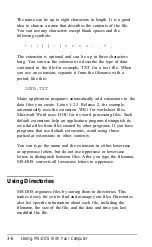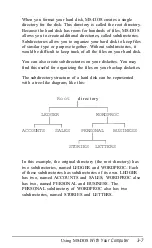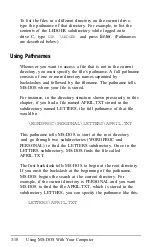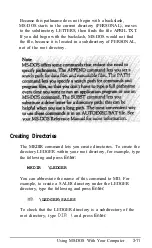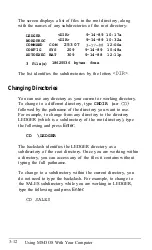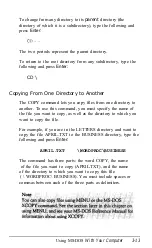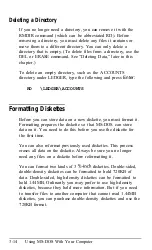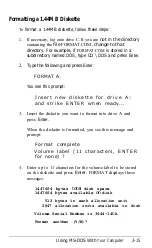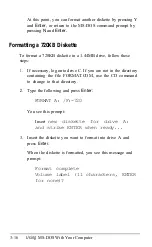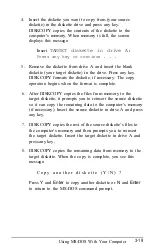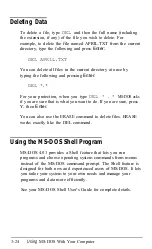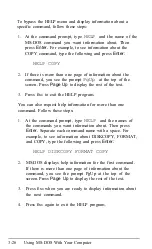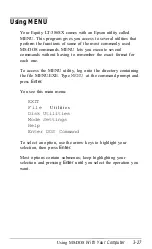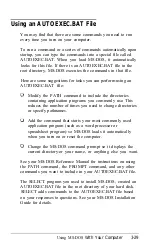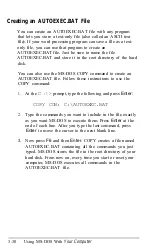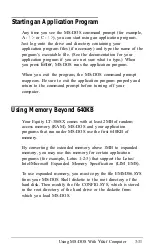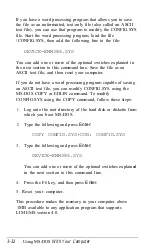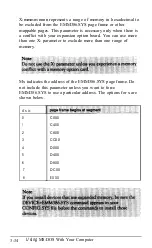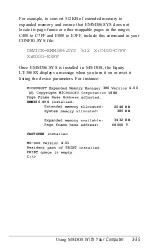
Using COPY
The COPY command lets you copy files in several ways:
Copy individual files from a diskette or the hard disk to
another diskette or hard disk
Copy a group of files using wildcard characters (wildcard
characters are explained below)
Copy one or more files and give them new names
Combine or merge files into one file.
A few simple rules apply to all uses of COPY:
You must tell MS-DOS where to find the source file and
where to store the target file.
If an existing file on the target diskette or directory has
the same name as the file you are copying, the copy
automatically replaces (overwrites) the existing file.
MS-DOS does not provide a warning. Be careful you do
not accidentally replace a file that you want to keep.
If you are copying to a diskette, the diskette must be
formatted.
To use the COPY command, type
COPY
at the command
prompt, followed by the drive identifiers and necessary
filenames. Then press
Enter
to execute the command.
For example, to copy a file named REPORT from the diskette in
drive A to the hard disk (drive C), using the same name for the
copy as for the original file, type the following and press
Enter:
COPY A:REPORT C:
3-20
Using
MS-DOS With Your Computer
Summary of Contents for Equity LT-386SX
Page 1: ...EQUITY LT 386SX User s Guide EPSON ...
Page 3: ...EPSON EQUITY LTT M 386SX User s Guide ...
Page 183: ... No codes Ignored D 42 System Diagnostics ...
Page 184: ... No codes Ignored System Diagnostics D 43 ...
Page 189: ... No codes Ignored D 48 System Diagnostics ...
Page 190: ... No codes Ignored System Diagnostics D 49 ...
Page 192: ... No codes Ignored System Diagnostics D 51 ...
Page 193: ... No codes Ignored D 52 System Diagnostics ...
Page 194: ... No codes Ignored System Diagnostics D 53 ...
Page 195: ... No codes Ignored D 54 System Diagnostics ...

